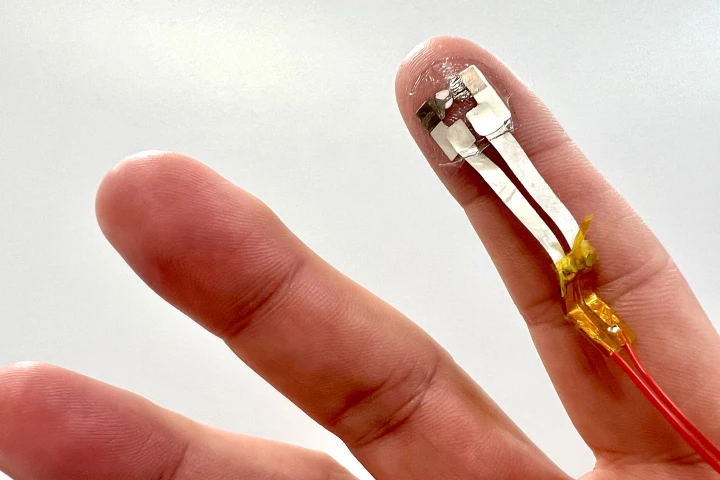Haptics
-
Engineers at Northwestern University have developed a device that goes on your fingertip to feel the sensation of interacting with textured surfaces on a touchscreen. It could be a major step forward in how we interact with personal tech.
-
Input devices such as computer mice may be rigid for now, but thanks to new hydraulic haptic tech they could someday be soft n' squishy. And that's not all … they may also "throb" in our hand to provide tactile feedback as we use them.
-
A team of researchers at Rice University has developed a haptic feedback vest and camera system for a blind dog known as Kunde. The vest helps guide the dog through daily obstacles and the hope is that it will soon do the same for other pups.
-
Wouldn't it be cool to 'feel' a textured object, or perceive the sensation of running your hand over rich fabric in VR? That's what researchers at Northwestern University are hoping to achieve with their new wearable.
-
It’s not always to picture what’s going on while listening to sports on the radio – so spare a thought for vision-impaired people who don’t have options. Now they do: meet the OneCourt, a haptic feedback device that works like braille for sports.
-
In order for a VR environment to seem real, it definitely helps if you can experience the sensation of touch within that virtual world. A special sleeve could soon allow people to better do so, using air instead of electric motors.
-
Scientists have devised a clever new method of allowing people to feel sensations that are transmitted to their skin. Beyond its applications in fields such as gaming and telepresence, the technology could also be used to guide the blind.
-
Some folks prefer to get a grip on things to better understand concepts. Researchers have developed smart gloves for tactile learners that use haptic feedback and AI to teach users new skills, fast-track precision training and control robots remotely.
-
There are now a number of gloves that deliver tactile sensations to VR users' fingertips when they touch virtual objects. The Phantom glove is unique, however, in that it doesn't cover the fingers, leaving them free for real-world interactions.
-
Researchers have developed an ultrathin electronic tattoo capable of reproducing the localized sensation of touch in its wearer. The device has the potential to be used to manufacture haptic displays and devices for healthcare and robotics.
-
Fluid Reality is offering a cheaper, more lightweight haptic VR glove that doesn’t need to be tethered to bulky backpacks or multitudes of tubing. It’s designed to provide users with a high-resolution VR experience, direct to their fingertips.
-
In recent years, we've heard about navigational systems which guide pedestrians via vibrating actuators in their shoes. The FeetThrough system takes a different and reportedly better approach, by actually shocking the soles of the feet.
Load More










